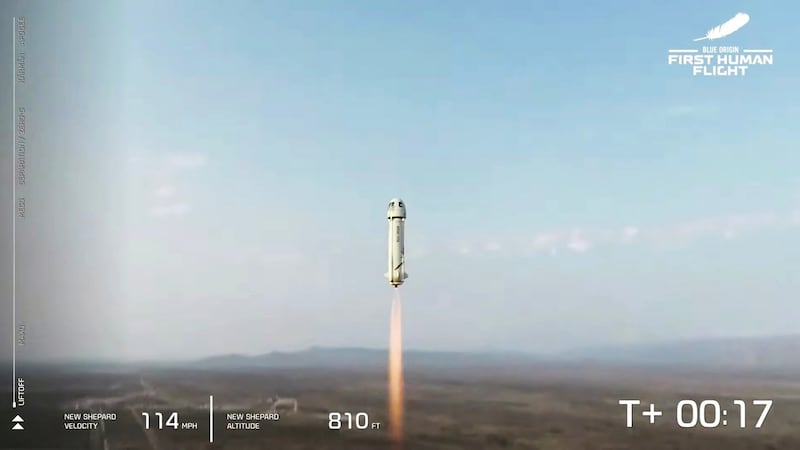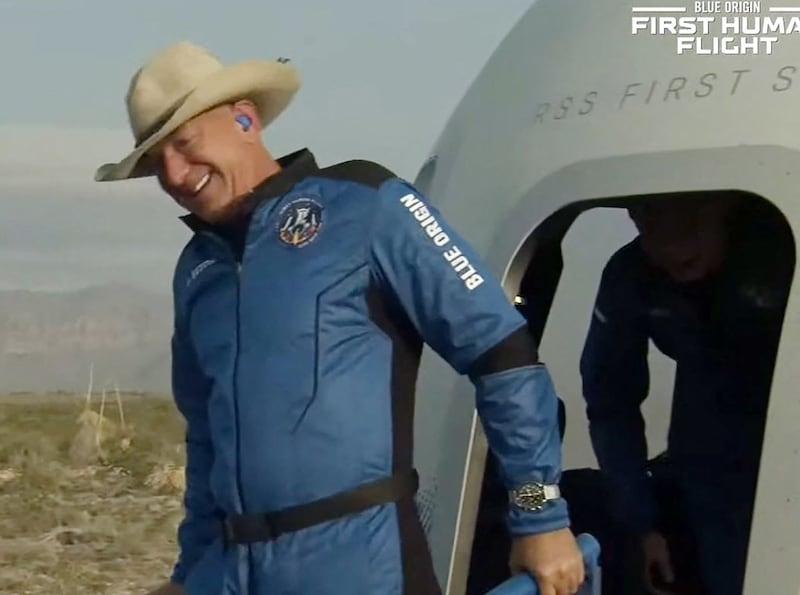Jeff Bezos’s 11-minute trip aboard a Blue Origin rocket to the edge of space on Tuesday left the world’s richest man feeling “unbelievably good” and his crew “very happy”. But afterwards, as he wondered aloud how fast he could refuel, the rest of the world was left pondering just why the New Shepard rocket had such a distinctive shape.
As social media erupted with innuendo, we contacted a few experts to find out why it looked, in the words of one astrophysicist, so “anthropomorphic”.
At one major research institution, the press officer refers us to the gender-studies department, but Jonathan McDowell, an astronomer at the Harvard-Smithsonian Center for Astrophysics, is able to shed some light on the topic.
New Shepard consists of a mushroom-like crew capsule that flares out over a long shaft, called a booster. The rounded top appears more bulbous than that of many other rockets, but it’s not unique. “There’s a long history of what we call hammerhead rockets,” on which the capsule’s diameter is wider than the booster, says McDowell. “If you’re careful, it actually has perfectly fine aerodynamics.”

Just like the tips of passenger and military jets, capsules come in all different shapes. New Shepard's interior is designed to "maximize the interior volume" to hold six passengers, says Laura Forczyk, the owner of Astralytical, a space analytics company. It also needs a "big, flat bottom" for stable re-entry, McDowell says.
"They went through a lot of iterations coming up with the perfect shape to give them the most volume, the best windows, and [a design that] wouldn't kill anyone onboard," says the astrophysicist Scott Manley. "And this is the shape they came up with, this dome shape."
As for the booster, engineers work to minimise its mass, making it as small as possible. “It is easier to balance a long and skinny cylinder than it is to balance a thicker, fatter cylinder,” Forczyk says.
These competing concerns can lead to a capsule that is a bit wider than might originally have been envisioned. “It comes down to optimising two different things and not being able to make them quite match,” McDowell says. He points to other examples of rockets with slightly flared tops, including the Atlas V Starliner, expected to launch next week.

Adding to those “anthropomorphic” qualities is a ridge near the top that is “very, very obvious”, Manley says. That’s there to accommodate a “ring-shaped fin” that is fundamental to the re-entry process, counteracting the effects of the fin at the bottom as the booster travels in reverse.
All this adds up to some particularly memorable optics. Was there any subtle aesthetic messaging involved? “I don’t know if I would have made the design this way, but I’m sure it was driven entirely by physics” as well as cost savings, says Forczyk.
Still, “they can’t not have noticed”, McDowell says. “You’ve got to imagine there was a meeting where someone went, ‘Do you really want to fly looking like this?’ But I’m guessing an engineer got up and said, ‘This is what the math says. This is the optimum configuration. So this is what we’re gonna fly.’” – Guardian









